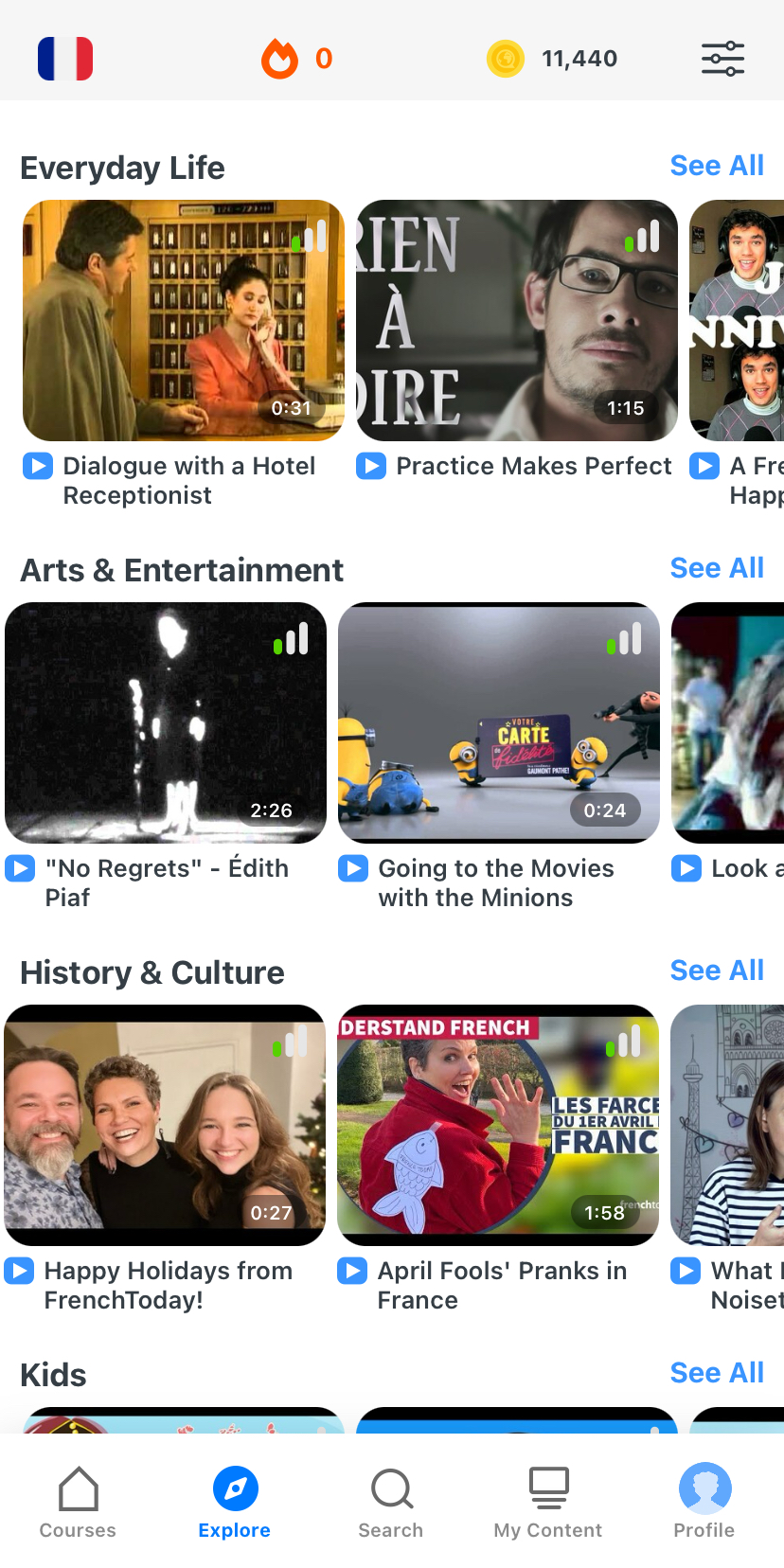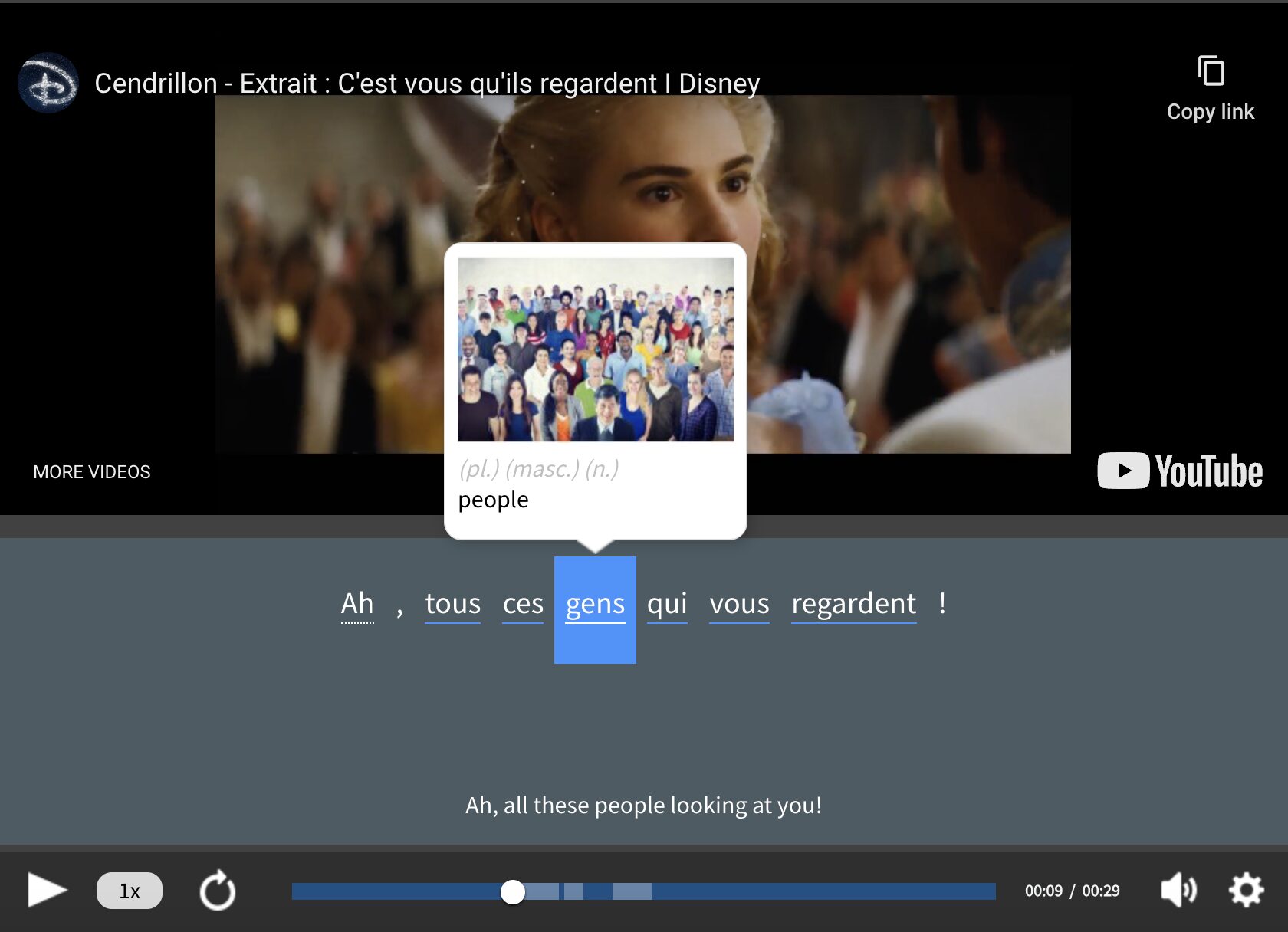How and When to Use French Contractions

You’re likely very familiar with contractions: two words combined to form one shorter word with an apostrophe replacing the dropped letters. In English we can choose to use “I will” or “I’ll,” but in French contractions are required.
Luckily, the rules are pretty simple to learn. And contractions are a part of everyday speech, so you’ll see and hear them often.
Download: This blog post is available as a convenient and portable PDF that you can take anywhere. Click here to get a copy. (Download)
When to Use French Contractions
In French, there are some words that were initially contractions. For example, aujourd’hui (today) is a contraction that dates back to the 12th century, made of:
au (on) + jour (day) + de (of) + hui (Latin for “today”)
Literal translation: “on the day of today”
D’abord (first of all, in the first place), d’accord (okay) and d’ailleurs (moreover, besides) are other examples of fixed contractions.
Besides the above-mentioned, there are quite a few contractions of a different sort in French. Let’s take a look at them according to six different categories.
Singular definite article: Le, la
L’ (the) is the contracted version of the definite articles le (the, for masculine nouns) and la (the, for feminine nouns). It’s used when the noun begins with a vowel or an h muet (silent h):
Le (the) + animal (animal) must contract to l’animal (the animal).
La (the) + étiquette (label, tag) must contract to l’étiquette (the label, tag).
Le (the) + homme (man) must contract to l’homme (the man).
Single-consonant words that end with a silent e
In French, there are nine single-consonant words that end with an e muet (silent e): ce, de, je, le, me, ne, que, se and te.
Let’s take a look at these words in contractions, where the vowel is dropped and contracted with the second word.
| Words that get contracted | Examples |
|---|---|
| Ce (this) | Ce + est = c'est (this/that/it is) |
| De (of, from) | De + Angleterre (England) = d'Angleterre (of/from England) |
| Je (I)* | Je + aime (like) = j'aime (I like/love) Je + y (an adverbial pronoun that refers to "here" or "there") + vais (go) = j'y vais (I'm going there.) |
| Le (him, it) | Je l'aime. (I like/love him.) |
| Me (myself) | Je m'habille. (I dress myself/I am getting dressed.) |
| Ne (not) | Il n'est pas chez lui. (He is not at home.) |
| Que (that/what/whom) | Le livre qu'il a achété est long. (The book that he bought is long.) |
| Se (oneself) | Il s'appelle Jean. (His name is Jean. Literally: He calls himself Jean.) |
| Te (you, to you) | Marie t'écrit une lettre. (Marie is writing you a letter.) |
*Note: When je (I) is inverted, it does not contract. For example, in the construction puis-je (may I), when followed by a verb that begins with a vowel such as avoir (to have), a resulting sentence would look like this, with no contraction between je and avoir:
Puis-je avoir un verre d’eau ?
(May I have a glass of water?)
The conjunctions puisque and lorsque
Puisque means “since,” “because as,” and lorsque means “when,” “while” and “as soon as.”
Let’s see how these conjunctions are contracted with other words.
| Contractions with Puisque and Lorsque | Examples |
|---|---|
| Puisque + on = puisqu'on (since we...) | Puisqu'on parle de coûts, je vais vérifier les achats. (Since we're talking about costs, I will verify the purchases.) |
| Puisque + il = puisqu'il (since he...since it...) | Puisqu'il était en avance, Marc a sorti son livre. (Since he was early, Marc took out his book.) |
| Lorsque + on = lorsqu'on (when one) | Lorsqu'on est gourmand, on mange sans avoir faim. (When one is a food lover, one eats without being hungry.) |
| Lorsque + il = lorsqu'il (when it...) | Lorsqu'il est vide, range ton sac. (When it is empty, put away your bag.) |
The adverb or preposition jusque
The adverb or preposition jusque (until, too) combines with other words to form various contractions.
| Contractions with Jusque | Examples |
|---|---|
| Jusque + à (at) = jusqu'à (up to) | On marche jusqu'à la gare. (We're walking up to the train station.) |
| Jusque + alors (then, at the time) = jusqu'alors (up until now) | Son magasin jusqu'alors fermé est ouvert. (His store, up until now closed, is open.) |
| Jusque + en (in) = jusqu'en (until [a certain date]) | L'eau est restée au même niveau jusqu'en 2015. (The water stayed at the same level until 2015.) |
| Jusque + ici (here) = jusqu'ici (all the way here) | J'ai couru jusqu'ici. (I ran all the way here.) |
The preposition à
Let’s take a look at how the preposition à (at) forms contractions with other words.
| Contractions with à | Examples |
|---|---|
| à + le (the) = au (at the) | Je suis au parc. (I am at the park.) |
| à + les = aux (to the, at the, with) | J'ai mal aux yeux. (My eyes hurt.) |
| à + lequel = auquel (to which) | L'homme auquel tu parlais habite dans ce quartier. (The man to whom you were speaking lives in this neighborhood.) |
| à + lesquels = auxquels (to which, referring to masculine plural nouns) | Les hommes auxquels tu parlais habitent dans ce quartier. (The men to whom you were speaking live in this neighborhood.) |
| à + lesquelles = auxquelles (to which, referring to feminine plural nouns) | Les femmes auxquelles tu parlais habitent dans ce quartier. (The women to whom you were speaking live in this neighborhood.) |
Note: à + laquelle does not contract, as in:
La femme à laquelle tu parlais est arrivée.
(The woman to whom you were speaking has arrived.)
The preposition de
In the table below you’ll find different contractions formed with the preposition de (of, from).
| Contractions with de | Examples |
|---|---|
| de + le = du (from, of the) | J'ai une table du Maroc. (I have a table from Morocco.) |
| de + les = des (the indefinite article for "some") | Il y a des crayons sur le bureau. (There are some pencils on the desk.) |
| de + lequel = duquel (of which) | Le bâtiment à côté duquel on habite a été cambriolé. (The building next to which we lived was robbed.) |
| de + lesquels = desquels (of which, referring to masculine plural nouns) | Les bâtiments à côté desquels on habite ont été cambriolés. (The buildings next to which we lived were broken into.) |
| de + lesquelles = desquelles (of which, referring to feminine plural nouns) | Les voitures à côté desquelles nous avons stationné ont été cambriolées. (The cars next to which we parked were robbed.) |
Note: The definite articles la and l’ don’t contract when in the presence of the prepositions à or de. Also, when le and les are object pronouns rather than definite articles, they don’t contract either.
When to Not Use Contractions in French
Let’s take a look at other examples in which contractions don’t play a role.
- Before h aspiré (aspirated h)
Nouns like haricot (green bean) and héro (hero), which begin with an aspirated h, are accompanied by the definite article le (the) rather than l’ (the) to form:
le haricot (the green bean)
le héro (the hero)
- After qui (that)
Voici un livre qui est intéressant.
(Here is a book that is interesting.)
- Between si and elle(s)
Si elle est là, je serai contente.
(If she is here, I will be happy.)
- Between la and une
In most cases, a contraction actually is used between la and une, as in L‘une entre elles est en retard (One of them is late). When la une refers to news headlines, however, no contraction is used:
Le scandale a fait la une.
(The scandal made the headlines.)
With some practice and exposure to written and spoken French, these contractions will become more familiar and easy to use.
Consistency is key, and if you stay consistent in your French practice, your use of contractions will eventually feel like second nature.
Download: This blog post is available as a convenient and portable PDF that you can take anywhere. Click here to get a copy. (Download)
And One More Thing...
If you like learning French at your own pace and from the comfort of your device, I have to tell you about FluentU.
FluentU makes it easier (and way more fun) to learn French by making real content like movies and series accessible to learners. You can check out FluentU's curated video library, or bring our learning tools directly to Netflix or YouTube with the FluentU Chrome extension.
One of the features I find most helpful is the interactive captions—you can tap on any word to see its meaning, an image, pronunciation, and other examples from different contexts. It’s a great way to pick up French vocab without having to pause and look things up separately.
FluentU also helps reinforce what you’ve learned with personalized quizzes. You can swipe through extra examples and complete engaging exercises that adapt to your progress. You'll get extra practice with the words you find more challenging and even be reminded you when it’s time to review!
You can use FluentU on your computer, tablet, or phone with our app for Apple or Android devices. Click here to take advantage of our current sale! (Expires at the end of this month.)










